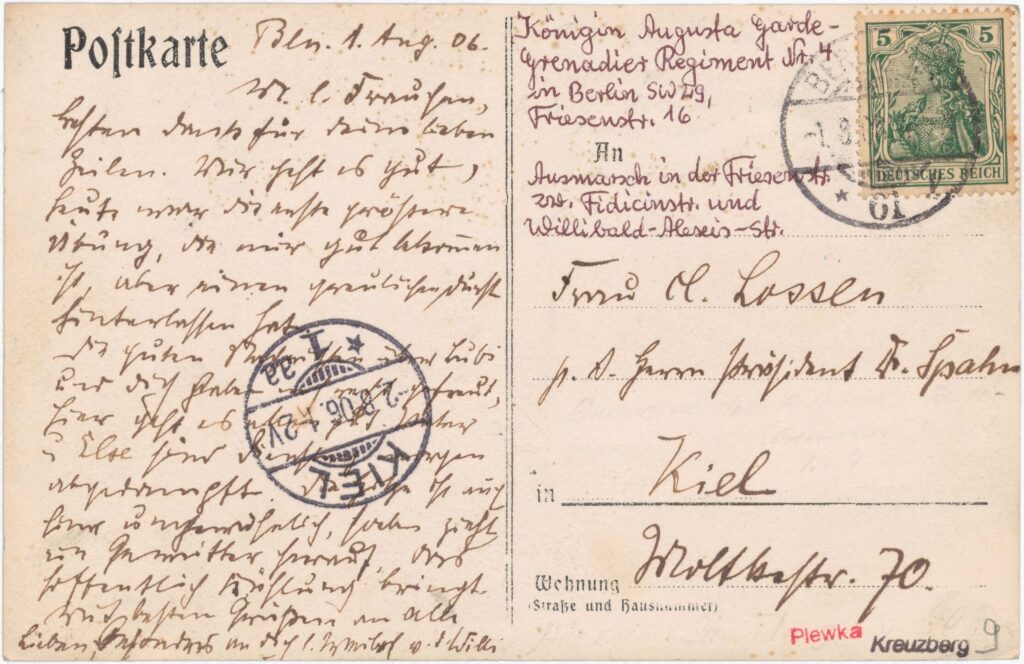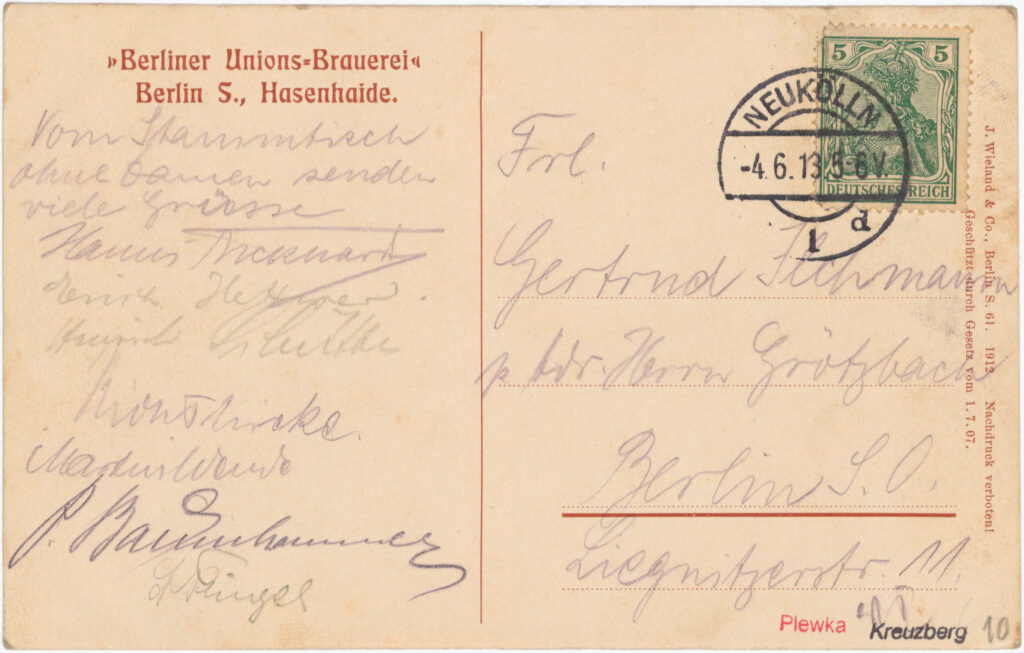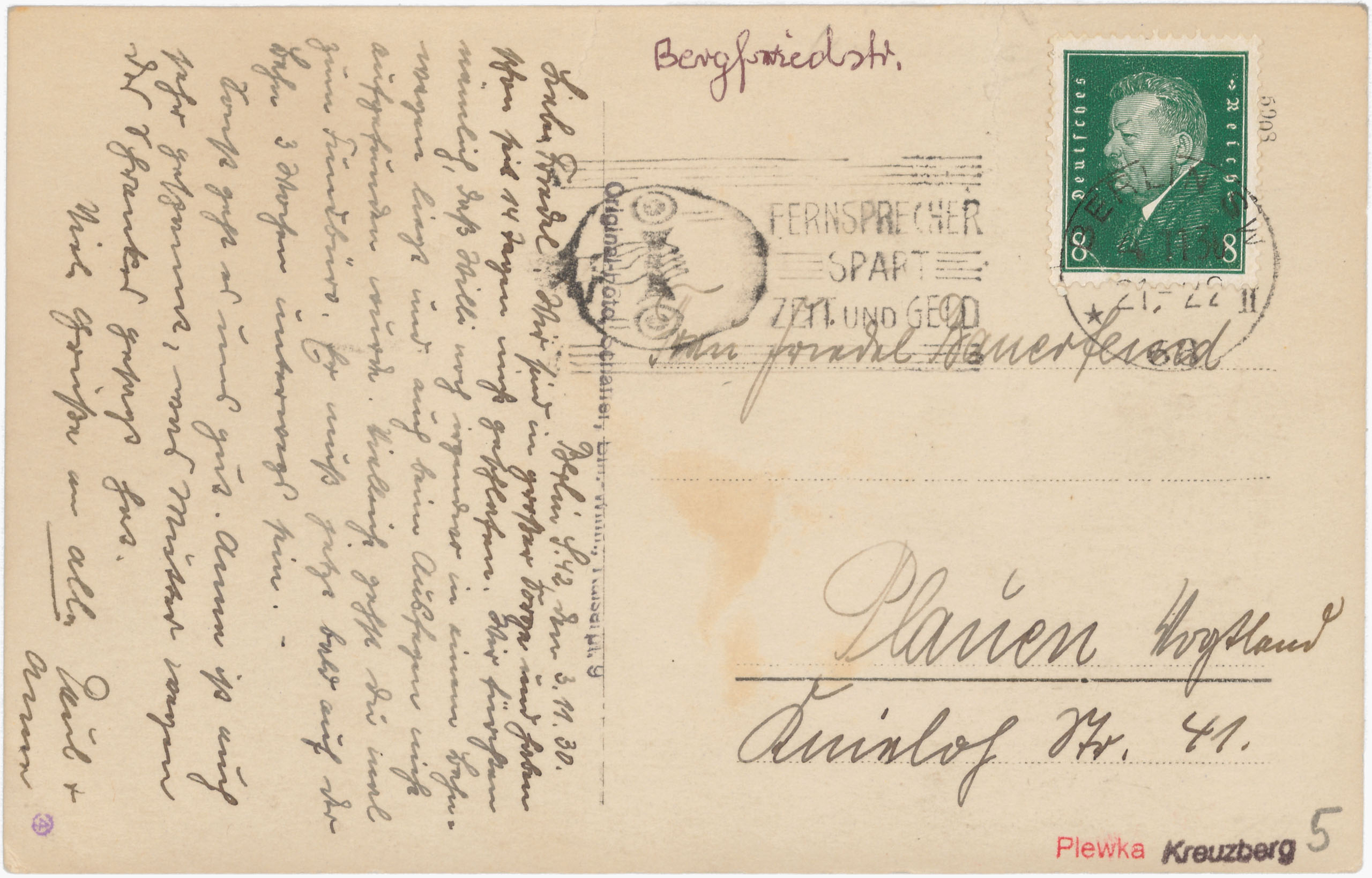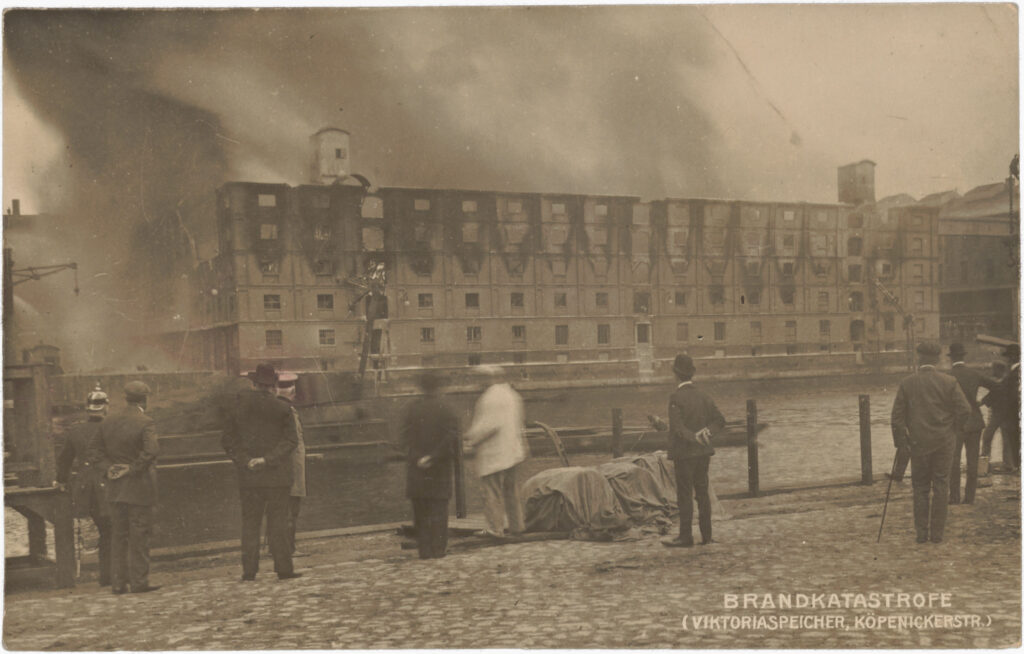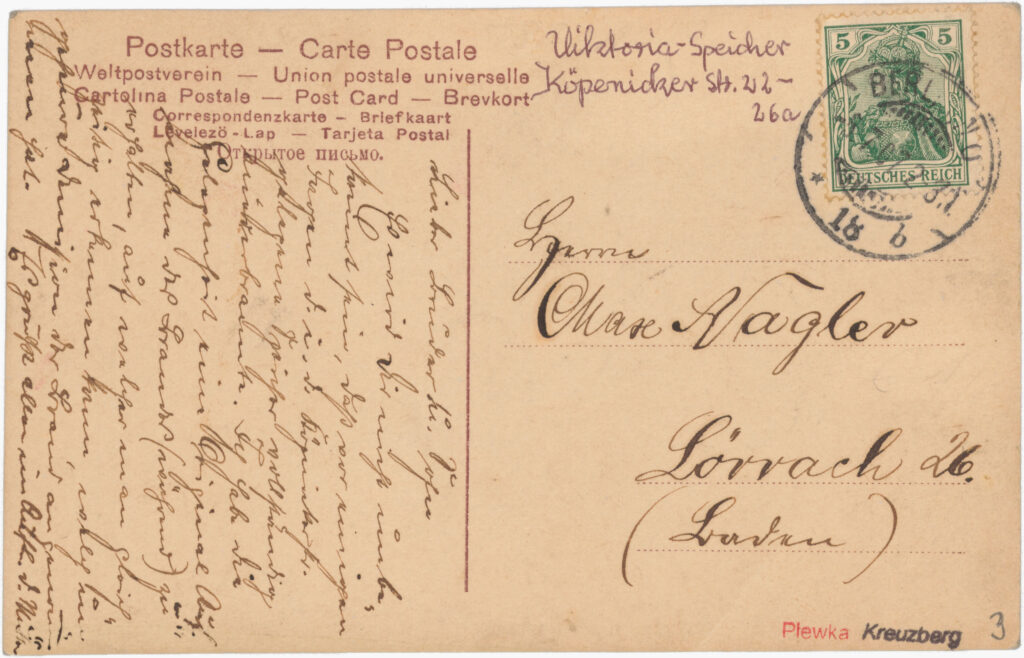- Homepage
- Topics
- National socialism in everyday life in Kreuzberg
- Communist working-class milieu
- Persecution and expropriation of Jews in Kreuzberg
- Paula Thiede and the newspaper district
- Lisa Fittko’s Kreuzberg neighborhood
- November Revolution
- Disaster Images
- Kreuzberg Garrison
- Queer in the Weimar Republic
- Trade, Craft, and Industries
- Colonial Kreuzberg
- Women in Kreuzberg
- Technology & Faith in Progress
- Archive
- About the Project
Postcards as a Means
of Communication
Around 1900, postcards were cheaper than letters or telegrams and were used by many people for brief communications. Even less experienced writers sent postcards–—unlike letters, which were more commonly a medium for the bourgeoisie.
Postcards were also used for tourist greetings and could be written, sent, and delivered within a day. In Berlin around 1900, mail was delivered eight to eleven times a day, which allowed for short-term arrangements. The picture postcard was both a reflection and a catalyst of accelerated communication in the city. Even international mail often took only a day to arrive.
For many people, picture postcards often represented the only images of their neighborhood or workplaces. They used these postcards to show their living environment, their homes, workplaces, or pictures of themselves.
Postcards were not only produced and used for individual communication. Businesses used picture postcards to advertise their services, and political parties used them for their messages.
Tourist Communication
As early as 1900, picture postcards were used to report on and illustrate travels. Due to the short delivery time of postcards, even last-minute arrangements for returning could be organized through them.
Intimate Communication
Unlike sealed letters, handwritten messages on postcards were immediately readable by everyone. Nevertheless, senders did not refrain from addressing private matters.
Illustrated Everyday Life
Around 1900, picture postcards–—similar to today’s social media–—were used to illustrate everyday life: people marked their homes or workplaces or commented on depicted events that they had personally experienced.
Reports from the New Life
The heyday of the picture postcard coincided with industrialization and the massive influx of workers from near and far into the cities. Postcards were often used to convey the new living environment––for example, by marking new residences or workplaces directly on the images.
Soldiers Writing Home
As part of the militarization of the German Empire, many young men moved into urban barracks and reported their new daily life to their families via postcards. They often chose picture postcards featuring scenes of their lives in the barracks. Since Kreuzberg was an important military location, there are many such cards in Peter Plewka’s collection.
Greetings from the Pub
In the hospitality industry, postcards from restaurants and pubs could often be purchased and sent directly on-site. Thanks to the multiple daily mail deliveries, one could quickly inform others of one’s current location and company, and invite them to join.
Short-Term Messages
Postcards were also used to handle everyday matters, and
regular delivery made this possible even on short notice. As only a few people had access to a telephone around the turn of the century, postcards often replaced phone calls.
Reports on Events
Freshly printed postcards allowed for up-to-date reporting on extraordinary events. Since the 1860s, photography had advanced with improvements in camera technology and shorter exposure times. Rapid production times for postcards made these photographs available as postcards within a few hours, enabling people to report on events in a timely manner.



















